All-mountain skis are designed to handle both groomed slopes and off-piste terrain, making them a versatile choice for skiers of all levels. Here's what you need to know:
- All-Mountain Ski Basics: Typically 90–105mm wide underfoot, combining rocker (for easier turns and powder flotation) and camber (for edge grip and stability).
- Shorter Skis vs. Longer Skis: Shorter skis, like Snowfeet* Skiblades (65–120cm), offer better maneuverability, less physical strain, and faster learning compared to traditional long skis.
- Carving Tips: Short skis make carving easier with responsive edges, requiring less effort to control and balance.
- Off-Piste Skiing: Adapt techniques for different snow conditions (powder, crust, slush) and use compact skis for quick turns in uneven terrain or tight spaces.
- Advanced Terrain and Core Stability: Build core strength for better balance and experiment with different turn shapes to handle varied terrain confidently.
Quick Comparison of Snowfeet* Models
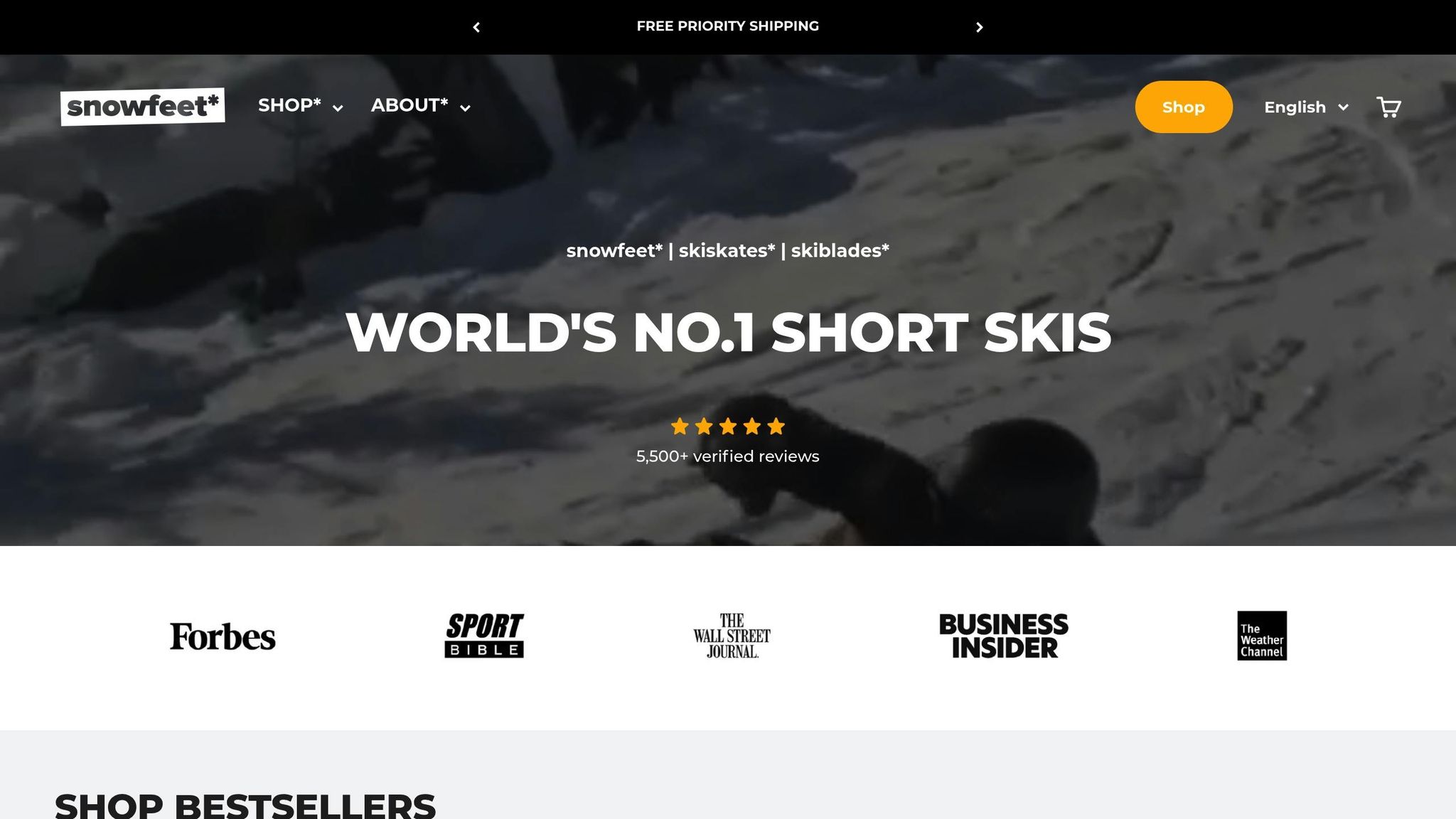
| Model | Length | Best For | Key Advantage | Price |
|---|---|---|---|---|
| Skiblades | 65 cm | Parks, moguls, tight trails | Maximum agility | $450 |
| Skiblades | 99 cm | All-mountain, mixed terrain | Balanced performance | $490 |
| WALKSKI Touring | 100 cm | Backcountry, powder | Touring capabilities | TBA |
Whether you're learning to carve or exploring off-piste terrain, shorter skis like Snowfeet* Skiblades provide agility, ease of use, and a fun skiing experience. Choose the model that matches your style and terrain preferences.
How to Carve on Skis | 5 Tips & Drills for Beginners / Intermediates
How to Carve with All-Mountain Skis
Carving is one of those skiing techniques that feels incredibly rewarding - it's all about using your ski edges to make smooth, controlled turns. Imagine drawing graceful arcs in the snow as your skis glide through, rather than pushing against, the surface.
Shorter skis, like Snowfeet* Skiblades, bring a fresh twist to carving. While brands like Rossignol and Atomic stick to longer skis for carving, Snowfeet* takes a different route, offering a more approachable and fun experience.
"Short skis are easier to carve and to turn than long skis, since you don't need to put too much pressure on your knees to actually tilt the skis on their edge. Plus, carving with skiboards is fun."
This ease of use becomes even more obvious when you're learning or refining your carving skills. Long skis can demand a lot of effort to engage the edges, but Snowfeet* Skiblades respond with minimal force, making carving smoother and less tiring. Let's break down the basics of carving and why shorter skis make it easier.
Carving Basics You Need to Know
Edge control is everything when it comes to carving. Your skis have metal edges that grip the snow when you tilt them at the right angle. To initiate a turn, roll your knees and ankles toward the big toe of your outside ski. This movement tips your skis onto their edges and sets the turn in motion.
Balance on your outside ski is key to staying in control. The outside ski (the one on the downhill side) does most of the work, with the inside ski providing stability. Push your outside knee toward the toe of the binding to flex the ski and engage its edge.
Keep your upper body steady. Your arms should stay forward, and your upper body should remain quiet while your lower body does the turning. This separation between your upper and lower body is what creates those smooth, controlled turns.
With Snowfeet* Skiblades, these fundamentals become easier to master. Their shorter length means there's less ski to manage, making it simpler to maintain balance and engage the edges. Plus, their responsiveness gives you instant feedback, helping you fine-tune your technique faster than you would with traditional skis.
Weight distribution is crucial. Keep your weight forward during the turn, and use your ankles to control how much you tilt the skis. On icy terrain, shift more weight to your outside ski for better grip. In softer snow, you can spread your weight more evenly across both skis.
Practice Drills to Improve Your Carving
Start with side slipping on a wide, groomed blue run. This drill helps you get a feel for controlling your edges without focusing on turns. Simply roll your ankles and knees to engage and release the edges, sliding sideways down the slope. With Snowfeet* Skiblades, you'll notice how quickly and smoothly the edges respond.
Work on the outside ski drill by lifting your inside ski during turns on a gentle green run. This forces you to balance entirely on your outside ski. The lighter weight of Snowfeet* Skiblades makes this drill less exhausting, allowing you to build muscle memory more easily.
Try the railroad tracks drill to practice making clean carved turns. On a green run, tip your ankles and knees to one side and let the skis naturally carve. Aim to leave two distinct arcs in the snow that look like railroad tracks. The maneuverability of shorter skis makes it easier to see progress in your track patterns.
Add a tuck to your railroad tracks drill to practice keeping your upper body still while your legs do the work. Perform the same drill but in a tucked position, focusing on lower body movement. The lightweight design of Snowfeet* Skiblades makes holding the tuck position more manageable.
Move on to J-turns for more dynamic carving practice. Start by skiing straight down the slope, then gradually shift your weight and push your knees and hips in the direction you want to turn. The goal is to create a J-shape in the snow. Snowfeet* Skiblades shine here, as their quick response helps you feel the transition from straight skiing to carving.
Finish with C-turns to practice full carved arcs. Shift your weight toward the direction you want to turn, carve perpendicular to the slope, and then straighten out. This creates a C-shape in the snow and helps you gain control over the entire arc of your turns.
Thanks to the responsiveness of Snowfeet* Skiblades, these drills feel less like a workout and more like a learning experience. You'll spend less energy wrestling with your skis and more time focusing on perfecting your technique. Once you've mastered these drills, you'll be ready to tackle advanced carving on all kinds of terrain.
How to Ski Off-Piste Terrain
Skiing off-piste is a whole different ballgame compared to cruising groomed runs. The snow can vary wildly - powder, crud, crust, slush, even ice - and sometimes you'll hit all of those in one run. It’s unpredictable, which makes it exciting but also challenging.
That’s where Snowfeet* Skiblades come into play. Their compact design is built for quick reactions, making them ideal for handling abrupt changes in terrain. While traditional long skis can feel clunky when you need to make a fast move, Snowfeet* Skiblades respond almost instantly.
"Snowblades are all about making quick, tight turns. Their small size makes them super easy to maneuver, which is awesome if you're dodging people on crowded runs or threading through tight spots." - Snowfeet Team
The key to skiing off-piste is staying adaptable, especially when it comes to adjusting your edge angles and how you distribute your weight.
How to Adjust Edge Angles and Pressure
Different snow conditions call for different techniques, and being able to tweak your approach is essential. Here are some tips for handling various types of snow:
- Powder (4–6 inches): Lean slightly forward and keep a narrower stance. Snowfeet* Skiblades don’t need much surface area to float, so focus on smooth, gentle edge engagement rather than hard carving.
- Crud or variable snow: Stay centered with a wider stance and keep your momentum up. The lightweight design of Snowfeet* Skiblades makes it easy to shift your weight and adjust on the fly.
- Spring snow and slush: Keep your weight forward. The responsiveness of Snowfeet* Skiblades allows for quick, precise adjustments to your edges, which is crucial in these conditions.
- Crusty snow: Apply light edge pressure to stay on top of the surface. The smaller ski surface of Snowfeet* Skiblades reduces the harsh impact you might feel with longer skis.
By fine-tuning your technique, you’ll be better equipped to handle whatever the mountain throws at you.
How to Handle Off-Piste Challenges
Off-piste skiing isn’t just about the snow - it’s also about navigating the terrain, which can be full of surprises. Here’s how to tackle some common challenges:
- Uneven terrain: Flex and extend your legs to absorb bumps and dips. Snowfeet* Skiblades are lightweight, so they reduce fatigue and make it easier to react quickly in tight or bumpy spots.
- Tree runs and tight paths: The compact size of Snowfeet* Skiblades gives you the agility to weave through narrow spaces where longer skis might feel clunky.
- Mogul fields: Shorter skis like these make it easier to stay balanced and keep your rhythm as you make quick, precise turns down the fall line.
- Anticipating changes: Always keep an eye on the terrain ahead. Snowfeet* Skiblades are incredibly responsive, letting you adjust instantly when you encounter ice, hidden rocks, or sudden drop-offs.
- Maintaining rhythm: Counting your turns can help you keep a steady speed through mixed snow types. When you hit heavy, wet snow, the reduced swing weight of the Skiblades prevents that sluggish, stuck-in-molasses feeling.
- Clearing obstacles: Add a little pop between turns by pushing at the end of each turn. This technique works well with the light, nimble design of Snowfeet* Skiblades and keeps you from wearing out too quickly.
With the right techniques and the right gear, off-piste skiing becomes less of a challenge and more of an adventure.
sbb-itb-17ade95
Advanced Techniques for Different Terrain
Once you’ve got the basics down, it’s time to step up your skiing game by experimenting with turn shapes and building core strength. These skills are key for tackling varied terrain with confidence. Let’s explore how to refine your turns and develop the core stability needed for smooth, controlled skiing.
Snowfeet* Skiblades are a game-changer for advanced moves. Unlike traditional long skis, which can feel sluggish when you need to make quick adjustments, Snowfeet* Skiblades react almost instantly to your movements.
How to Create Different Turn Shapes
Thanks to their nimble design, Snowfeet* Skiblades make switching between turn shapes easy. Whether you’re navigating tight spaces, mixed terrain, or wide-open slopes, these skiblades adapt to your style.
- Short, quick turns are perfect for moguls or narrow trails, where precision is key.
- Medium-radius turns work well on mixed terrain, offering a balance of control and flow.
- Long, sweeping carves shine on open slopes, letting you glide with stability and speed.
Snowfeet* models range from 65 cm to 120 cm, each offering a unique blend of agility and control. The 65 cm skiblades are ideal for tight spots, giving you a skating-like feel on snow. The 99 cm version strikes a balance between stability and responsiveness, while the 120 cm option provides a smoother ride reminiscent of traditional skis - but with easier turning and stopping compared to brands like Head or Elan.
Another factor to consider is width. Wider skiblades excel in soft snow, offering extra stability, while narrower ones are quicker and more responsive on groomed runs. This flexibility means you can tailor your gear to match the day’s conditions and terrain.
While mastering turn shapes is crucial, having a strong core is what keeps everything under control - especially when terrain gets unpredictable.
How to Build Core Stability for Better Balance
A strong core is what separates good skiers from great ones. When you’re skiing with Snowfeet* Skiblades, your core plays a vital role in managing rapid, precise movements. But it’s not just about abs - core stability involves your entire trunk, including your back, hips, glutes, and even your legs.
"While skiing, your trunk must maintain its fall line position while the lower body rotates side to side to turn your skis. To make that happen, you need solid anti-rotation and stabilization from the trunk."
- Connie Sciolino, head coach and owner of the Alpine Training Center in Boulder, Colorado
Snowfeet* Skiblades allow for dynamic movements, but they also demand excellent control. That’s where core strength comes in. It helps you maintain balance and stay steady, even in tricky conditions.
Balance training is just as important as core strength. It helps improve your brain’s ability to sense your position relative to the ground, a skill known as proprioception. JC Cole, Human Performance Director for Ski and Snowboard Club Vail, explains:
"It's about how your brain perceives where you are in terrain, relative to the ground"
The good news? You don’t need a fancy gym to build core stability. Many effective exercises can be done right at home, in your hotel room, or even at the lodge between runs. Focus on moves that enhance both anti-rotation and stabilization. Here are a few to try:
- Planks with reaches: These stabilize your body while resisting rotation.
- Hollow holds: Engage deep core muscles to control your ribcage and pelvis.
- Copenhagen planks: Strengthen rotational stability by targeting obliques and hip adductors.
The benefits of a strong core are immediate. Whether you hit an unexpected patch of ice or need to dodge an obstacle, your core will keep you balanced and in control. Snowfeet* Skiblades, with their lightweight design, make it easier for your core to focus on precision.
Start with simple exercises and nail your form before moving on to more challenging variations. The goal? Train your core to engage automatically, so you can focus on the terrain ahead and enjoy the ride.
Which Snowfeet* Model to Choose
Picking the right Snowfeet* model can make all the difference in your skiing experience. Unlike the longer skis from brands like Rossignol or Atomic, which focus on speed and stability, Snowfeet* skis are all about agility, fun, and the ability to tackle a variety of terrains with ease.
Snowfeet* models range in length from 65 cm to 100 cm, making them easier to control and less tiring to use. Let’s break down the options and see which one fits your style.
Snowfeet* Skiblades (65 cm): Small, Quick, and Responsive
These compact skiblades are perfect if you’re looking for a skating-like experience. They’re ideal for terrain parks, mogul runs, or weaving through tight tree lines.
Best for: Groomed slopes, moguls, terrain park tricks, and narrow trails.
Thanks to their short length, these skiblades respond instantly to your movements. They’re great for quick turns and navigating tricky spots where longer skis can feel clunky. Plus, their small size means they’re easy to carry - just throw them in a backpack or keep them in your car for impromptu ski trips.
Snowfeet* Skiblades (99 cm): Versatile All-Mountain Option
If you’re after something that balances agility with stability, the 99 cm Skiblades are your go-to. They’re versatile enough to handle a mix of terrains and snow conditions.
Best for: Mixed terrain, moderate powder, tree runs, and all-mountain skiing.
These skiblades are smooth and predictable on groomed runs but also offer decent float in moderate powder. They’re easier to maneuver through trees compared to traditional skis, making them an excellent choice for intermediate skiers who want to explore more adventurous terrain.
Snowfeet* WALKSKI Backcountry Touring Skis (100 cm): Built for Adventure
The WALKSKI model is where Snowfeet* combines the agility of short skis with features designed for backcountry touring. These are perfect for skiers looking to explore off the beaten path.
Best for: Backcountry touring, powder, uphill climbs, and mixed-terrain adventures.
These skis come with a dual binding system that works with almost any winter footwear, from hiking boots to snowboard boots. They also include built-in sealskin for better grip during uphill climbs. With both free-heel and fixed-heel options, you can easily switch between climbing and descending. Lightweight and easy to use, they’re a great introduction to backcountry skiing for beginners.
| Model | Length | Best For | Key Advantage | Price |
|---|---|---|---|---|
| Skiblades | 65 cm | Park, moguls, carving | Maximum agility | From $450 |
| Skiblades | 99 cm | All-mountain, mixed terrain | Versatile performance | From $490 |
| WALKSKI | 100 cm | Backcountry, powder | Touring capability | TBA |
Each model is designed to make skiing easier and more fun, whether you’re carving down groomed runs, tackling moguls, or heading into the backcountry. With Snowfeet*, you’ll enjoy reduced fatigue, quicker learning, and unmatched maneuverability for whatever terrain you choose.
Conclusion: Get More from Your Skiing with Snowfeet*
Snowfeet* is here to redefine how you experience the slopes. Unlike traditional ski brands like Rossignol and Atomic, which focus on long, heavy equipment that often requires complex setups and pricey boots, Snowfeet* offers a lighter, simpler, and more portable solution that doesn’t compromise on fun.
With a stellar 90% 5-star review rate and options ranging from 65 cm to 100 cm, Snowfeet* proves that shorter skis can mean more - more agility, more riding, and less hassle.
"With these little skis, you feel much more agile, faster, and above all – comfortable. No buckles, no heavy boots – just strap in and go." - Jakub F
Portability is another huge win. At just 3.3 lbs, Snowfeet* skis are easy to pack, making them perfect for impromptu trips - no more lugging around oversized skis and clunky boots.
You’ve got choices too: the 65 cm Skiblades for unmatched agility at $450, the 99 cm all-mountain option at $490, or the WALKSKI for backcountry explorers. Each one is designed to make skiing easier, more accessible, and, dare we say, more fun than ever.
The learning curve? Practically nonexistent. Beginners are mastering green runs in hours, not days, while seasoned skiers are unlocking new levels of control and creativity.
"SnowFeet has been a game changer for me! I grew up in Western NC near great slopes but never got to ski - until Snowfeet* changed the game! At 35, I went skiing for the first time and with SnowFeet, I mastered a green run on the FIRST night - within 2 hours!" - Courtney Luckadoo, Snowfeet* PRO User
These firsthand stories highlight why Snowfeet* is making waves with skiers everywhere. Say goodbye to cumbersome gear and embrace the freedom to explore the mountain like never before.
FAQs
What makes Snowfeet* Skiblades better than traditional long skis for carving and off-piste skiing?
Snowfeet* Skiblades bring a fresh twist to skiing with their shorter length, ranging from 65 to 120 cm. This compact size makes them super easy to handle, letting you zip through sharp turns on groomed trails or weave through tight spots off-piste without breaking a sweat. Compare that to traditional skis, which are usually 150 to 200 cm long - they can feel clunky and demand more strength and experience, especially if you're new to skiing or just out for a casual day on the slopes.
Another big plus? Their lightweight design. These skiblades are much easier on your legs, making them a great option for skiers of all ages and skill levels. Whether you're gliding through light powder or sticking to smooth, groomed runs, Snowfeet* Skiblades offer a fun, approachable way to enjoy the mountain - without the hassle of heavy, oversized gear. They’re all about agility, simplicity, and making skiing more enjoyable for everyone.
What’s the best way for beginners to improve carving skills with Snowfeet* Skiblades?
Beginners can sharpen their carving skills in no time with Snowfeet Skiblades* by focusing on edge control and keeping the right body posture. Start on mellow, groomed slopes to get the hang of how these shorter skiblades grip the snow. Thanks to their compact size, they’re much easier to handle than traditional skis, making tight, precise turns a breeze.
Work on basic moves like traversing and J-turns to get comfortable using the edges of the skiblades. These techniques help you create smooth arcs, giving you better balance and control. Unlike traditional skis from brands like Rossignol or Atomic, Snowfeet* Skiblades are lightweight and nimble, making them a great choice for beginners looking to master carving without breaking a sweat.
With Snowfeet*, you’ll have a fun and approachable way to level up your skills - whether you’re gliding down groomed runs or gearing up for tougher terrain.
What are the best techniques for using Snowfeet* Skiblades in off-piste snow conditions?
To tackle off-piste snow conditions with Snowfeet Skiblades*, focus on keeping your movements smooth and steady. Flowing, rhythmic turns are your best friend here - they help maintain momentum and prevent you from getting stuck in the softer snow. Try to avoid sudden stops or jerky motions, as these can throw off your balance or cause you to sink.
Lean slightly forward to stay in control, especially when you're in powder. This forward stance helps distribute your weight evenly, keeping your skiblades responsive and easier to handle. If you're using poles, shorter ones can make a big difference - they improve balance and make it easier to adjust to uneven terrain.
And don’t forget one of the coolest perks of Snowfeet Skiblades*: their lightweight, nimble design. These skiblades shine when it comes to quick maneuvers and handling tight spaces, giving you an edge over traditional long skis in tricky off-piste conditions.














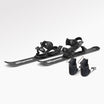






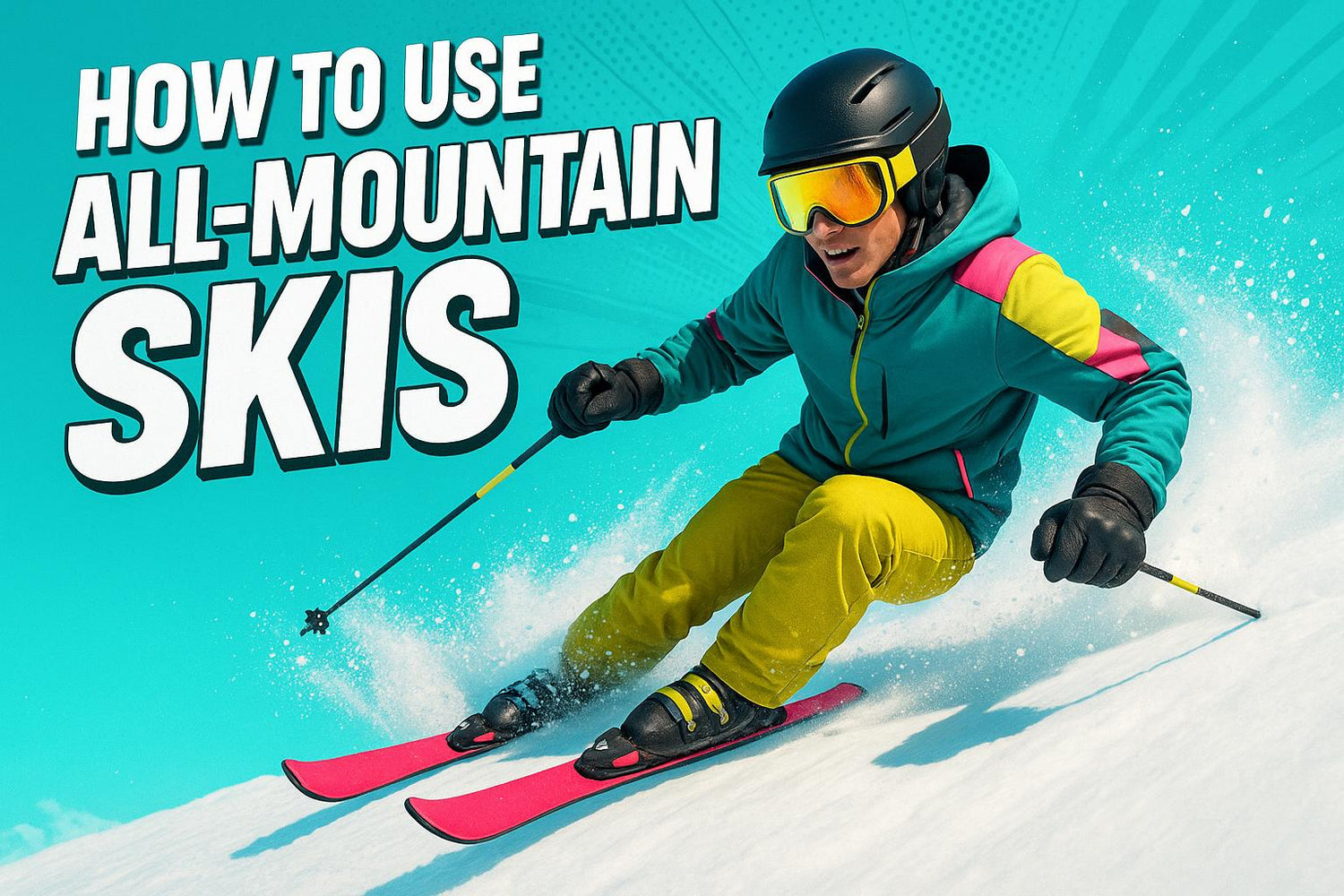
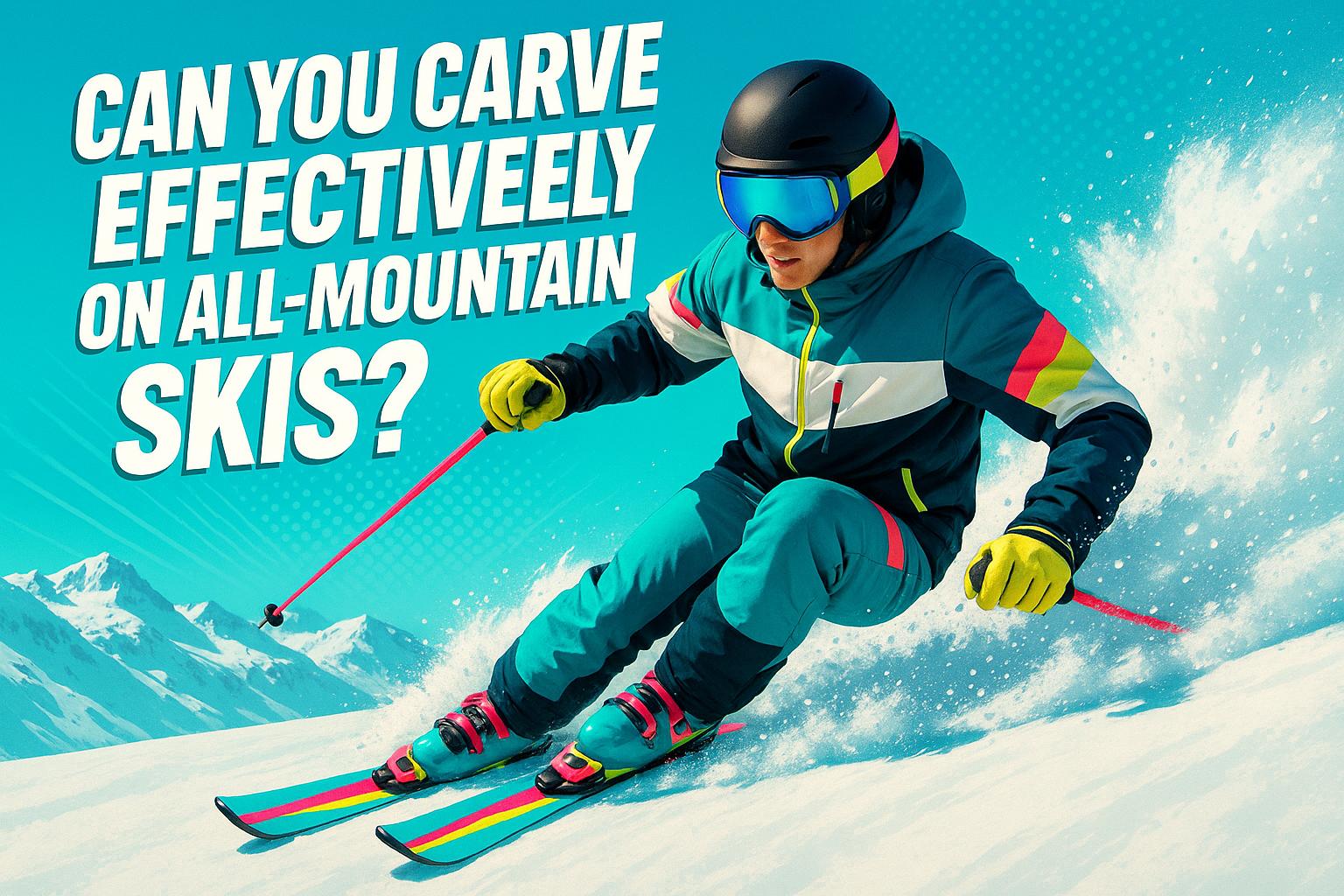
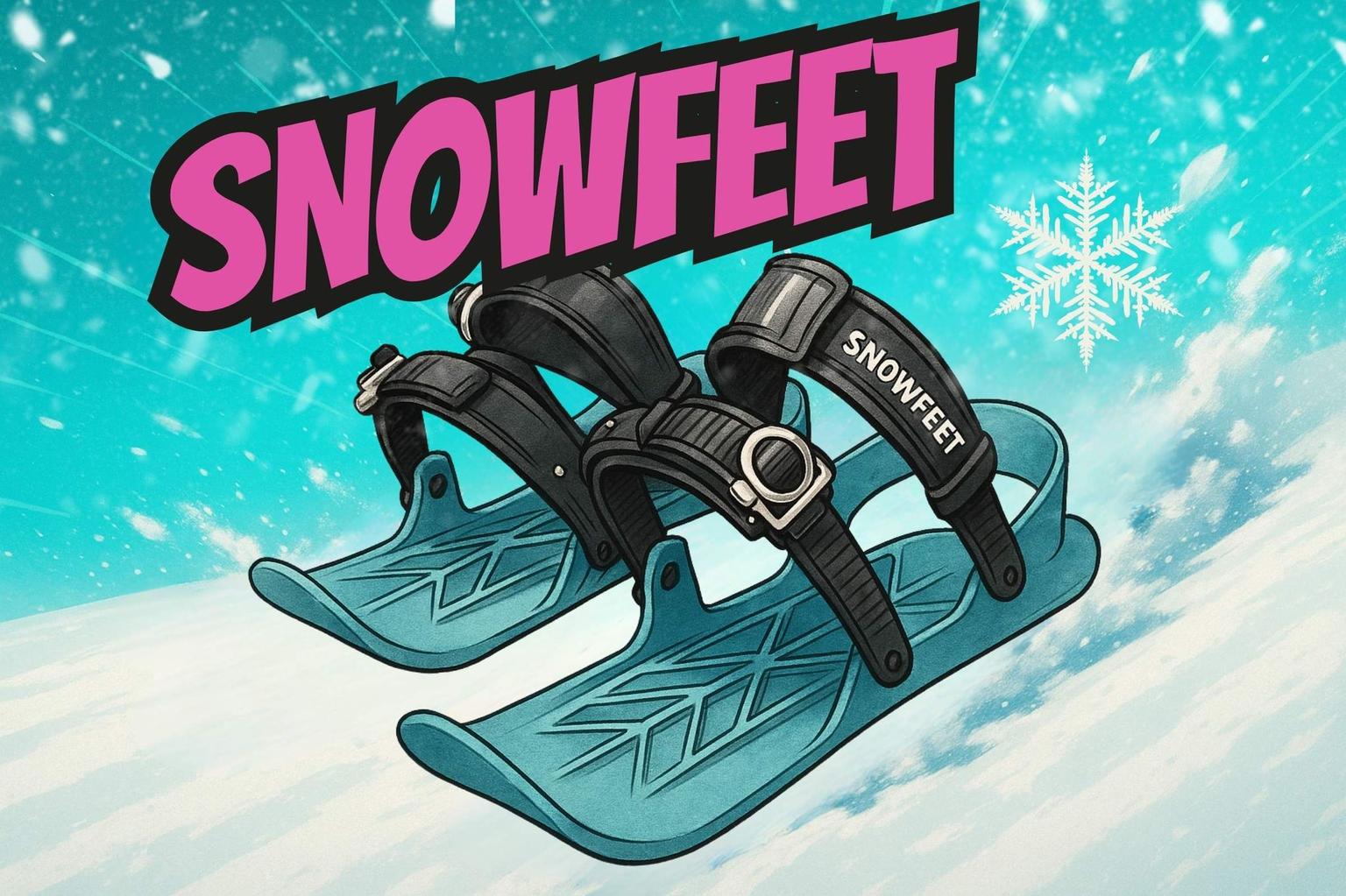










Leave a comment
This site is protected by hCaptcha and the hCaptcha Privacy Policy and Terms of Service apply.